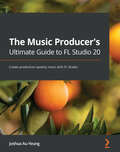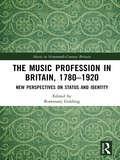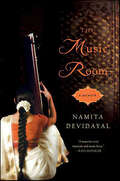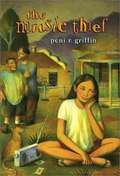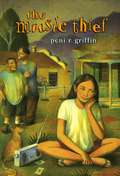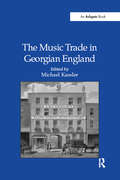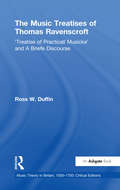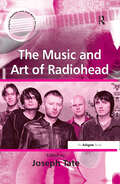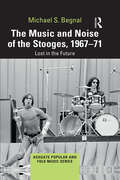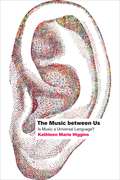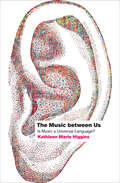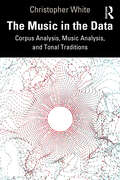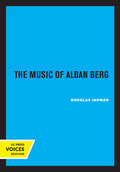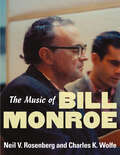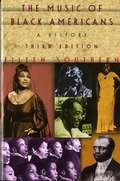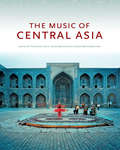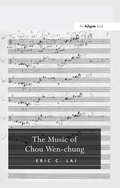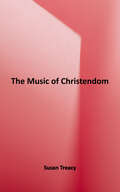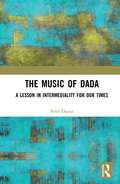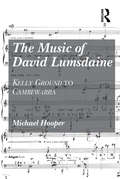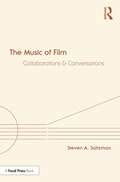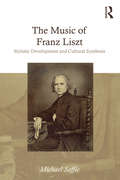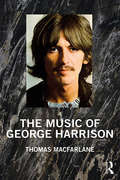- Table View
- List View
The Music Producer's Ultimate Guide to FL Studio 20: Create production-quality music with FL Studio
by Joshua Au-YeungLeverage the power of FL Studio 20 to create and compose production-quality songs and develop professional music production skillsKey FeaturesLeverage the power of FL Studio to create your own production-level musicDevelop widely applicable music production skills and learn how to promote your musicUtilize cutting-edge tools to fuel your creative ideas and publish your songsBook DescriptionFL Studio is a cutting-edge software music production environment and an extremely powerful and easy-to-use tool for creating music. This book will give you everything you need to produce music with FL Studio like a professional.You'll begin by exploring FL Studio 20's vast array of tools, and discover best practices, tips, and tricks for creating music. You'll then learn how to set up your studio environment, create a beat, compose a melody and chord progression, mix sounds with effects, and export songs. As you advance, you'll find out how to use tools such as the Piano roll, mixer console, audio envelopes, types of compression, equalizers, vocoders, vocal chops, and tools for increasing stereo width. The book introduces you to mixing best practices, and shows you how to master your songs. Along the way, you'll explore glitch effects and create your own instruments and custom-designed effect chains. You'll also cover ZGameEditor Visualizer, a tool used for creating reactive visuals for your songs. Finally, you'll learn how to register, sell, and promote your music.By the end of this FL Studio book, you'll be able to utilize cutting-edge tools to fuel your creative ideas, mix music effectively, and publish your songs.What you will learnGet up and running with FL Studio 20Record live instruments and vocals and process themCompose melodies and chord progressions on the Piano rollDiscover mixing techniques and apply effects to your tracksExplore best practices to produce music like a professionalPublish songs in online stores and promote your music effectivelyWho this book is forThis book is for music producers, composers, songwriters, DJs, and audio engineers interested in creating their own music, improving music production skills, mixing and mastering music, and selling songs online. To get started with this book, all you need is a computer and FL Studio.
The Music Profession in Britain, 1780-1920: New Perspectives on Status and Identity (Music in Nineteenth-Century Britain)
by Rosemary GoldingProfessionalisation was a key feature of the changing nature of work and society in the nineteenth century, with formal accreditation, registration and organisation becoming increasingly common. Trades and occupations sought protection and improved status via alignment with the professions: an attempt to impose order and standards amid rapid social change, urbanisation and technological development. The structures and expectations governing the music profession were no exception, and were central to changing perceptions of musicians and music itself during the long nineteenth century. The central themes of status and identity run throughout this book, charting ways in which the music profession engaged with its place in society. Contributors investigate the ways in which musicians viewed their own identities, public perceptions of the working musician, the statuses of different sectors of the profession and attempts to manipulate both status and identity. Ten chapters examine a range of sectors of the music profession, from publishers and performers to teachers and military musicians, and overall themes include class, gender and formal accreditation. The chapters demonstrate the wide range of sectors within the music profession, the different ways in which these took on status and identity, and the unique position of professional musicians both to adopt and to challenge social norms.
The Music Room: A Memoir
by Namita DevidayalWhen Namita is ten years old, her mother takes her to Kennedy Bridge, a seamy neighborhood in Bombay, home to hookers and dance girls. There, in a cramped one-room apartment lives Dhondutai, the last living disciple of two of the finest Indian classical singers of the twentieth century: the legendary Alladiya Khan and the great songbird Kesarbai Kerkar. Namita begins to learn singing from Dhondutai, at first reluctantly and then, as the years pass, with growing passion. Dhondutai sees in her a second Kesarbai, but does Namita have the dedication to give herself up completely to the discipline like her teacher? Or will there always be too many late nights and cigarettes? And where do love and marriage fit into all of this? A bestseller in India, where it was a literary sensation, The Music Room is a deeply moving meditation on how traditions and life lessons are passed along generations, on the sacrifices made by women through the ages, and on a largely unknown, but vital aspect of Indian life and culture that will utterly fascinate American readers.
The Music Thief
by Peni R. GriffinAlma misses many things. She misses her grandmother; her big brother Eddie back when he didn't deal drugs; the freedom she had before her baby niece Silvita was born; and now, worst of all, she misses Jovita, the singer she idolized who was recently killed in a drive-by shooting. Just when things seem hopeless, Alma discovers the cat door in her neighbors often-empty home, and an unexpected window opens into a better world, full of music. And what could be the harm in Alma's stealing (borrowing really) a little peace and quiet, maybe even a ticket to her future? Peni R. Griffin has written a stunning novel that is at once brutally honest and realistically hopeful. Alma's world shines with small but life-changing possibility.
The Music Thief
by Peni R. GriffinIn a harsh and noisy time, a young girl's key to her dreams -- music -- may be closer than she thinks.There was a new song playing in the back of Alma's head. An angry song, for Jovita and her killer, and Eddie, and everybody whose family did things that everybody had to live with. She could feel it, thumping in her brain, but couldn't hear it well enough to even hum it. Not in this house.She needed quiet, and a guitar. She needed Mrs. B's house.Alma misses many things. She misses her grandmother; her big brother Eddie back when he didn't deal drugs; the freedom she had before her baby niece Silvita was born; and now, worst of all, she misses Jovita, the singer she idolized who was recently killed in a drive-by shooting. Just when things seem hopeless, Alma discovers the cat door in her neighbor's often-empty home, and an unintended window opens into a better world, full of music.And what could be the harm in Alma's stealing (borrowing, really) a little peace and quiet, maybe even a ticket to her future?Peni R. Griffin has created a character at once bitter and optimistic. She has succeeded, even more impressively, in making the "dark" world surrounding Alma shine with small -- but life-changing -- possibility.
The Music Trade in Georgian England: Musical Instruments And Printed Music
by Michael KasslerIn contrast to today's music industry, whose principal products are recorded songs sold to customers round the world, the music trade in Georgian England was based upon London firms that published and sold printed music and manufactured and sold instruments on which this music could be played. The destruction of business records and other primary sources has hampered investigation of this trade, but recent research into legal proceedings, apprenticeship registers, surviving correspondence and other archived documentation has enabled aspects of its workings to be reconstructed. The first part of the book deals with Longman & Broderip, arguably the foremost English music seller in the late eighteenth century, and the firm's two successors - Broderip & Wilkinson and Muzio Clementi's variously styled partnerships - who carried on after Longman & Broderip's assets were divided in 1798. The next part shows how a rival music seller, John Bland, and his successors, used textual and thematic catalogues to advertise their publications. This is followed by a comprehensive review of the development of musical copyright in this period, a report of efforts by a leading inventor, Charles 3rd Earl Stanhope, to transform the ways in which music was printed and recorded, and a study of Georg Jacob Vollweiler's endeavour to introduce music lithography into England. The book should appeal not only to music historians but also to readers interested in English business history, publishing history and legal history between 1714 and 1830.
The Music Treatises of Thomas Ravenscroft: 'Treatise of Practicall Musicke' and A Briefe Discourse (Music Theory In Britain, 1500-1700: Critical Editions Ser.)
by RossW. DuffinThomas Ravenscroft is best-known as a composer of rounds owing to his three published collections: Pammelia and Deuteromelia (both 1609), and Melismata (1611), in addition to his harmonizations of the Whole Booke of Psalmes (1621) and his original sacred works. A theorist as well as a composer and editor, Ravenscroft wrote two treatises on music theory: the well-known A Briefe Discourse (1614), and 'A Treatise of Practicall Musicke' (c.1607), which remains in manuscript. This is the first book to bring together both theoretical works by this important Jacobean musician and to provide critical studies and transcriptions of these treatises. A Briefe Discourse furthermore introduces an anthology of music by Ravenscroft, John Bennet, and Ravenscroft's mentor, Edward Pearce, illustrating some of the precepts in the treatise. The critical discussion provided by Duffin will help explain Ravenscroft's complicated consideration of mensuration, in particular.
The Music and Art of Radiohead (Ashgate Popular And Folk Music Ser.)
by Joseph TateThe Music and Art of Radiohead provides compelling close readings of the English band's music, lyrics, album cover art and music videos as well as critical commentary on interviews, reviews and the documentary film Meeting People is Easy. Established and emerging academic scholars engage with Radiohead's music and art via concerns of broader implication to contemporary cultural studies. Topics range from the band's various musical and multivalent social contexts to their contested situation within a global market economy; from asking the question, 'how free is art?' to considering the band's musical influences and radical sonic explorations. Together, the essays form a comprehensive discussion of Radiohead's entire oeuvre, from Pablo Honey to Hail to the Thief, with a special focus on the critically acclaimed best-selling albums Kid A and Amnesiac.
The Music and Noise of the Stooges, 1967-71: Lost in the Future (Ashgate Popular and Folk Music Series)
by Michael S. BegnalThe Stooges have come to be considered one of the most important rock bands, especially in regard to the formation of punk. By emphasizing their influence on later developments, however, critics tend to overlook the significance of the band in their own context and era. The Music and Noise of the Stooges, 1967-71 addresses such oversights. Utilizing the lenses of cultural criticism and sound studies (drawing on the thinking of Theodor Adorno, Jacques Attali, and Pierre Bourdieu, among others), as well as contemporary and archival texts, this extensively researched study analyzes the trajectory and musical output of the original Stooges. During the late 1960s and early 70s, a moment when the dissonant energy of rock’n’roll was more than ever being subsumed by the record industry, the Stooges were initially commercial failures, with the band’s "noisy" music and singer Iggy Pop’s "bizarre" onstage performances confusing their label, Elektra Records. As Begnal argues, the Stooges embodied a tension between market forces and an innovative, avant-garde artistic vision, as they sought to liberate audiences from passivity and stimulate an immanent joy in the rock’n’roll moment. This book offers a fresh perspective on the Stooges that will appeal both to rock fans and scholars (especially in the fields of cultural studies, the long Sixties, musicology, punk studies, and performance studies).
The Music between Us: Is Music a Universal Language?
by Higgins Kathleen MarieFrom our first social bonding as infants to the funeral rites that mark our passing, music plays an important role in our lives, bringing us closer to one another. In The Music between Us, philosopher Kathleen Marie Higgins investigates this role, examining the features of human perception that enable music's uncanny ability to provoke, despite its myriad forms across continents and throughout centuries, the sense of a shared human experience. Drawing on disciplines such as philosophy, psychology, musicology, linguistics, and anthropology, Higgins's richly researched study showcases the ways music is used in rituals, education, work, healing, and as a source of security and--perhaps most importantly--joy. By participating so integrally in such meaningful facets of society, Higgins argues, music situates itself as one of the most fundamental bridges between people, a truly cross-cultural form of communication that can create solidarity across political divides. Moving beyond the well-worn takes on music's universality, The Music between Us provides a new understanding of what it means to be musical and, in turn, human.
The Music between Us: Is Music a Universal Language?
by Kathleen Marie Higgins&“Higgins&’ love of music and cultural variety is evident throughout. She writes in a relaxed, accessible, sophisticated style…Highly recommended.&”—Choice From our first social bonding as infants to the funeral rites that mark our passing, music plays an important role in our lives, bringing us closer to one another. In this book, philosopher Kathleen Marie Higgins investigates this role, examining the features of human perception that enable music&’s uncanny ability to provoke—despite its myriad forms across continents and throughout centuries—the sense of a shared human experience. Drawing on disciplines such as philosophy, psychology, musicology, linguistics, and anthropology, Higgins&’s richly researched study showcases the ways music is used in rituals, education, work, and healing, and as a source of security and—perhaps most importantly—joy. By participating so integrally in such meaningful facets of society, Higgins argues, music situates itself as one of the most fundamental bridges between people, a truly cross-cultural form of communication that can create solidarity across political divides. Moving beyond the well-worn takes on music&’s universality, The Music between Us provides a new understanding of what it means to be musical and, in turn, human. &“Those who, like Higgins, deeply love music, actually know something about it, have open minds and ears, and are willing to look beyond the confines of Western aesthetics…will find much to learn in The Music between Us.&”—Journalof Aesthetics and Art Criticism
The Music in George's Head: George Gershwin Creates Rhapsody in Blue
by Suzanne SladeA picture book biography of famous composer George Gershwin and a look at his famous composition Rhapsody In Blue.George Gershwin heard music all the time—at home, at school, even on New York City's busy streets. Classical, ragtime, blues, and jazz—George's head was filled with a whole lot of razzmatazz! With rhythmic swirls of words and pictures, author Suzanne Slade and illustrator Stacy Innerst beautifully reveal just how brilliantly Gershwin combined various kinds of music to create his masterpiece, Rhapsody in Blue, a surprising and whirlwind composition of notes, sounds, and one long wail of a clarinet. Includes author's note, timeline, and bibliography.
The Music in the Data: Corpus Analysis, Music Analysis, and Tonal Traditions
by Christopher WhitePutting forward an extensive new argument for a humanities-based approach to big-data analysis, The Music in the Data shows how large datasets of music, or music corpora, can be productively integrated with the qualitative questions at the heart of music research. The author argues that as well as providing objective evidence, music corpora can themselves be treated as texts to be subjectively read and creatively interpreted, allowing new levels of understanding and insight into music traditions. Each chapter in this book asks how we define a core music-theory topic, such as style, harmony, meter, function, and musical key, and then approaches the topic through considering trends within large musical datasets, applying a combination of quantitative analysis and qualitative interpretation. Throughout, several basic techniques of data analysis are introduced and explained, with supporting materials available online. Connecting the empirical information from corpus analysis with theories of musical and textual meaning, and showing how each approach can enrich the other, this book provides a vital perspective for scholars and students in music theory, musicology, and all areas of music research.
The Music of Alban Berg
by Douglas JarmanThis title is part of UC Press's Voices Revived program, which commemorates University of California Press’s mission to seek out and cultivate the brightest minds and give them voice, reach, and impact. Drawing on a backlist dating to 1893, Voices Revived makes high-quality, peer-reviewed scholarship accessible once again using print-on-demand technology. This title was originally published in 1979.
The Music of Bill Monroe (Music in American Life)
by Neil V. Rosenberg Charles K. WolfeSpanning over 1,000 separate performances, The Music of Bill Monroe presents a complete chronological list of all of Bill Monroe’s commercially released sound and visual recordings. Each chapter begins with a narrative describing Monroe’s life and career at that point, bringing in producers, sidemen, and others as they become part of the story. The narratives read like a “who’s who” of bluegrass, connecting Monroe to the music’s larger history and containing many fascinating stories. The second part of each chapter presents the discography. Information here includes the session’s place, date, time, and producer; master/matrix numbers, song/tune titles, composer credits, personnel, instruments, and vocals; and catalog/release numbers and reissue data. The only complete bio-discography of this American musical icon, The Music of Bill Monroe is the starting point for any study of Monroe’s contributions as a composer, interpreter, and performer.
The Music of Black Americans: A History (3rd Edition)
by Eileen SouthernA comprehensive history from the colonial period through the late 20th century, by a leading author in the field of African-American music
The Music of Central Asia
by Theodore Levin Elmira Köchümkulova Saida DaukeyevaThis beautiful and informative enhanced ebook—so comprehensive it had to be split into two volumes, ebook 1 and ebook 2—offers a detailed introduction to the musical heritage of Central Asia for readers and listeners worldwide. Music of Central Asia balances "insider" and "outsider" perspectives with contributions by 27 authors from 14 countries. This stunning electronic book allows readers the opportunity to deeply engage with source material through over 180 embedded audio and video, pop-up study questions, transliterations and translations of performed texts, and direct links to the companion website (www.musicofcentralasia.org). The audio and video examples include transliterations and translations of the performed texts and a follow-along feature highlights the song lyrics in the text, as the audio samples play. This generously illustrated book is supplemented with boxes and sidebars, musician profiles, and an illustrated glossary of musical instruments, making it an indispensable resource for both general readers and specialists.Ebook 1 includes part I, "Music and Culture in Central Asia," an introductory overview of the music and musical instruments of Central Asia, and part II, "The Nomadic World," which focuses on music and musical life in historically nomadic regions of Central Asia. Ebook 2 contains part III, "The World of Sedentary Dwellers," which focuses on music and musical life in historically settled regions of Central Asia, and part IV, "Central Asian Music in the Age of Globalization," which addresses "the future of the past," focusing on cultural revitalization and renewal, tradition-based popular music, and contemporary music inspired but not constrained by tradition.
The Music of Central Asia
by Theodore LevinThis beautiful and informative enhanced ebook—so comprehensive it had to be split into two volumes, ebook 1 and ebook 2—offers a detailed introduction to the musical heritage of Central Asia for readers and listeners worldwide. Music of Central Asia balances "insider" and "outsider" perspectives with contributions by 27 authors from 14 countries. This stunning electronic book allows readers the opportunity to deeply engage with source material through over 180 embedded audio and video, pop-up study questions, transliterations and translations of performed texts, and direct links to the companion website (www.musicofcentralasia.org). The audio and video examples include transliterations and translations of the performed texts and a follow-along feature highlights the song lyrics in the text, as the audio samples play. This generously illustrated book is supplemented with boxes and sidebars, musician profiles, and an illustrated glossary of musical instruments, making it an indispensable resource for both general readers and specialists.Ebook 1 includes part I, "Music and Culture in Central Asia," an introductory overview of the music and musical instruments of Central Asia, and part II, "The Nomadic World," which focuses on music and musical life in historically nomadic regions of Central Asia. Ebook 2 contains part III, "The World of Sedentary Dwellers," which focuses on music and musical life in historically settled regions of Central Asia, and part IV, "Central Asian Music in the Age of Globalization," which addresses "the future of the past," focusing on cultural revitalization and renewal, tradition-based popular music, and contemporary music inspired but not constrained by tradition.
The Music of Chou Wen-chung
by EricC. LaiChou Wen-chung is one of the most influential musical figures of our time. His rich cultural background, his studies with Edgard Var and his interest in the genuine rapport between Eastern and Western musical traditions have been the major influences on his career. Although he is active in various artistic and cultural circles that include scholarship, education and cultural preservation, his major calling has always been composition. As a composer, Chou has created a group of works whose stylistic innovation and technical profundity are distinctive among composers of his generation. His music, which has received critical acclaim around the globe, documents his creative journey, especially in the realization of re-merger - the fusion of Eastern and Western music that has become a new mainstream in art music. Through extensive focus on sketch study, Eric Lai examines Chou's music to contribute to an understanding of his aesthetic orientation, his compositional technique, his role in the development of new music, and his influence upon the younger generation of composers.
The Music of Christendom: A History
by Susan TreacyMusic plays such an important part in everyone's life but how much do we know about the history of music? How did music shape our civilization and how was music itself shaped by the Catholic Church? Susan Treacy, an experienced professor of music, is an excellent guide to the history of music. Every Catholic should own at least one book on music. This is it.
The Music of Dada: A lesson in intermediality for our times
by Peter Dayan100 years after the Dada soirées rocked the art world, the author investigates the role that music played in the movement. Dada is generally thought of as noisy and unmusical, but The Music of Dada shows that music was at the core of Dada theory and practice. Music (by Schoenberg, Satie and many others) performed on the piano played a central role in the soirées, from the beginnings in Zurich, in 1916, to the end in Paris and Holland, seven years later. The Music of Dada provides a historical analysis of music at Dada events, and asks why accounts of Dada have so consistently ignored music’s vital presence. The answer to that question turns out to explain how music has related to the other arts ever since the days of Dada. The music of Dada is the key to understanding intermediality in our time.
The Music of David Lumsdaine: Kelly Ground to Cambewarra
by Michael HooperAustralian by birth but a longtime resident of Great Britain, David Lumsdaine (b.1931) is central to both Australian and British modernism. During the early 1970s Australian musical modernism was at its height. Lumsdaine and his Australian contemporaries were engaged with practices from multiple places, producing music that displays the attributes of their disparate influences; in so doing they formed a new conception of what it meant to be an Australian composer. The period is similarly important in Britain, for it saw the rise to prominence of composers such as Birtwistle, Davies, Goehr, Gilbert, Wood, Cardew and many others who were Lumsdaine's contemporaries, colleagues and friends. Hooper presents here a series of analyses of Lumsdaine's compositions, focusing on works written between 1966 and 1980. At the early end of this period is Kelly Ground, for solo piano. One of Lumsdaine's first acknowledged works, Kelly Ground connects explicitly with the music of high modernism, employing ideas about temporality as espoused by Ligeti, Stockhausen and Boulez, to form a new ritual for the (now mythical) Australian outlaw Ned Kelly. Hooper places Lumsdaine's music in the context of Australian and British avant-gardes, and reveals its elegance, lyricism and technical virtuosity.
The Music of Film: Collaborations and Conversations
by Steven A. SaltzmanThe Music of Film opens up the world of film music from the inside. Through a series of interviews and conversations with professional composers, music supervisors, music editors, and picture editors, this book shows how music for film and television works according to insiders in the industry. Here we find a comprehensive collection of techniques and personal insights and get a unique perspective on how these key players in postproduction interact, collaborate, and successfully build their careers. The Music of Film is essential reading for composers, editors, directors, and producers—aspiring and established alike—or anyone interested in learning how to start or manage a profession working with music in feature films, television, and other media.
The Music of Franz Liszt: Stylistic Development and Cultural Synthesis
by Michael SaffleMuch of Franz Liszt's musical legacy has often been dismissed as 'trivial’ or 'merely showy,' more or less peripheral contributions to nineteenth-century European culture. But Liszt was a mainstream composer in ways most of his critics have failed to acknowledge; he was also an incessant and often extremely successful innovator. Liszt's mastery of fantasy and sonata traditions, his painstaking settings of texts ranging from erotic verse to portions of the Catholic liturgy, and the remarkable self-awareness he demonstrated even in many of his most 'entertaining' pieces: all these things stamp him not only as a master of Romanticism and an early Impressionist, but as a precursor of Postmodern 'pop.' Liszt's Music places Liszt in historical and cultural focus. At the same time, it examines his principal contributions to musical literature -- from his earliest operatic paraphrases to his final explorations of harmonic and formal possibilities. Liszt's compositional methods, including his penchant for revision, problems associated with early editions of some of his works, and certain aspects of class and gender issues are also discussed. The first book-length assessment of Liszt as composer since Humphrey Searle’s 1956 volume, Liszt's Music is illustrated with well over 100 musical examples.
The Music of George Harrison
by Thomas MacFarlaneGeorge Harrison was one of the most prolific popular music composers of the late 20th century. During his tenure with the Beatles, he caught the wave of 1960s pop culture and began channeling its pervasive influence through his music. Often described as "The Invisible Singer," his solo recordings reveal him to be an elusive, yet essential, element in the Beatles’ sound. The discussion of George Harrison’s Beatle tracks featured in the text employs a Songscape approach that blends accessible music analysis with an exploration of the virtual space created on the sound recording. This approach is then used to explore Harrison’s extensive catalog of solo works, which, due to their varied cultural sources, seem increasingly like early examples of Global Pop. In that sense, the music of George Harrison may ultimately be viewed as an important locus for pan-cultural influence in the 20th century, making this book essential reading for those interested in the history of songwriting and recording as well as the cultural study of popular music.
